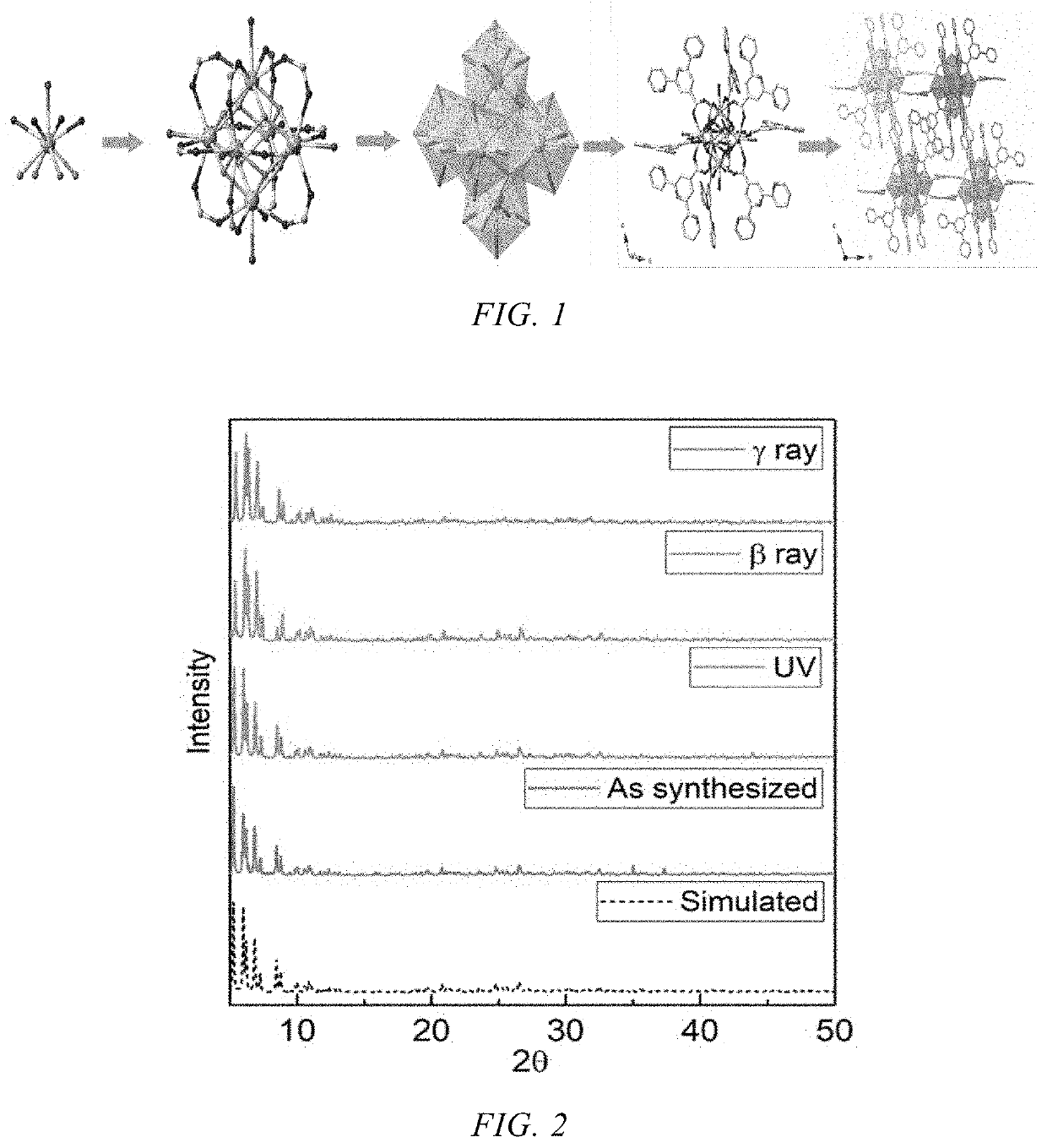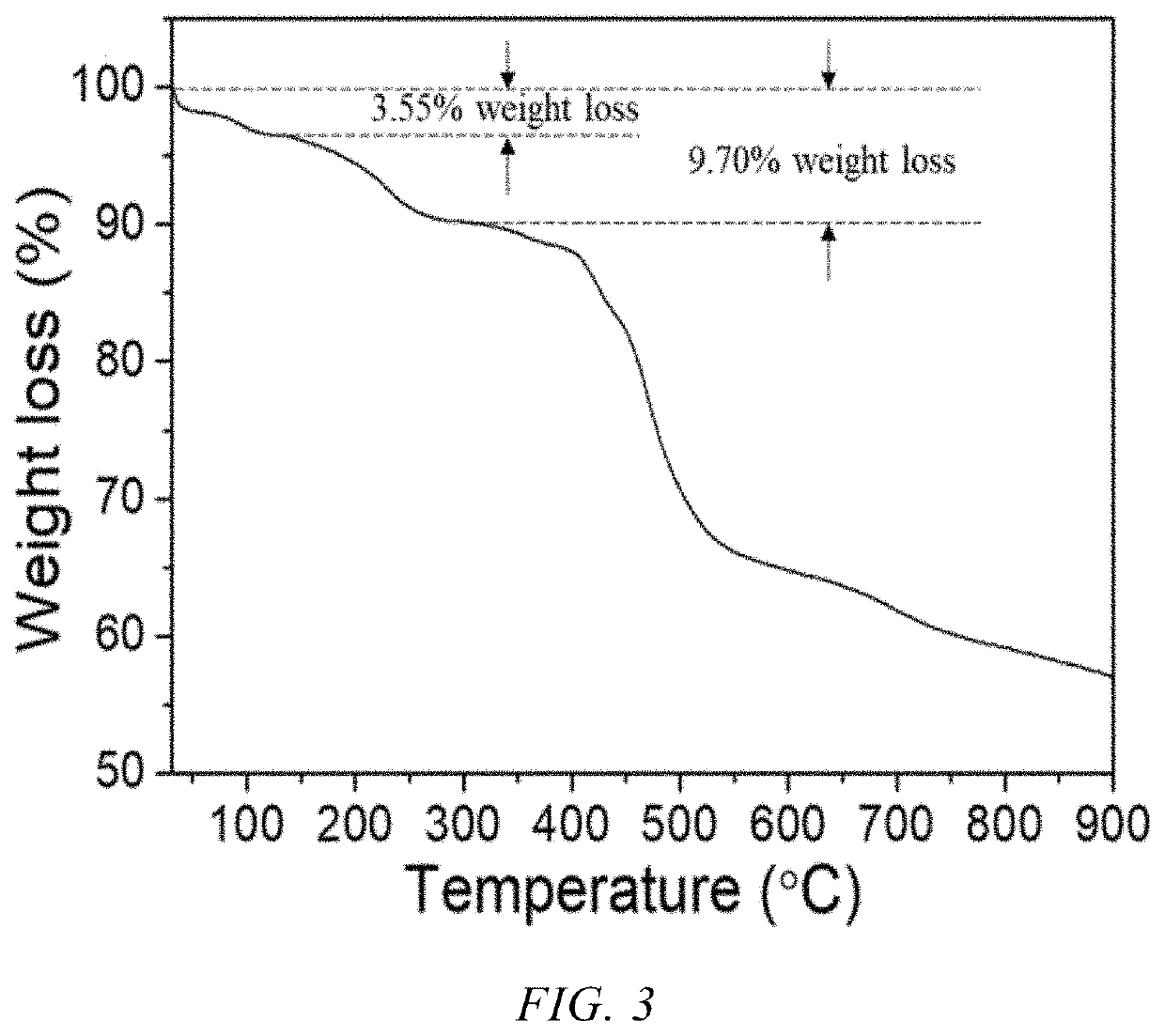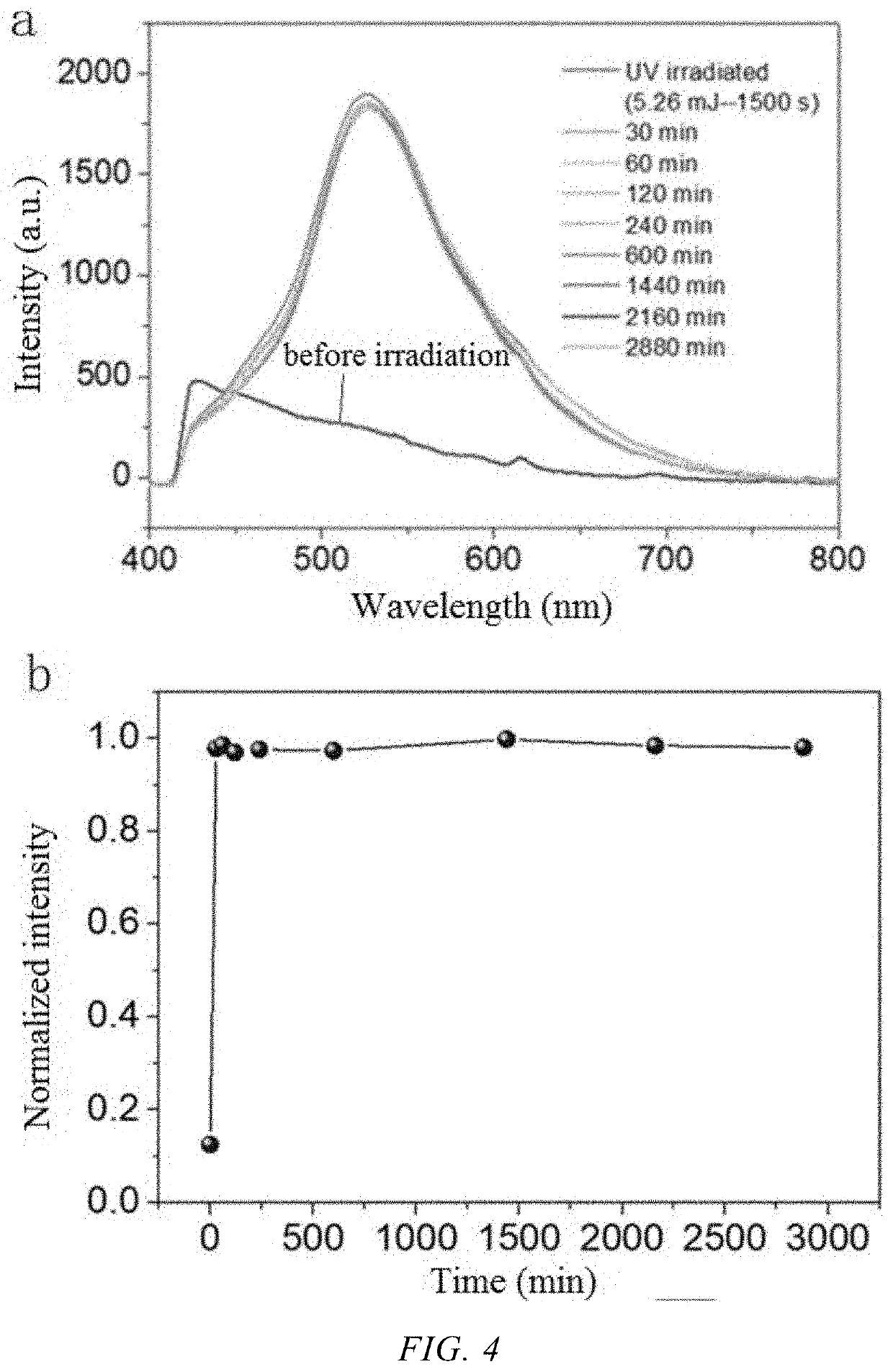Metal-organic hybrid lattice material and use thereof in detection of radiation sources
a technology of metal-organic hybrid lattice and radiation source, which is applied in the field of radiation detection materials, can solve the problems of low sensitivity, potential risks of ionizing radiation pollution, and traditional radio-induced photoluminescent materials (glass, ceramics, inorganic crystallization, etc.)
- Summary
- Abstract
- Description
- Claims
- Application Information
AI Technical Summary
Benefits of technology
Problems solved by technology
Method used
Image
Examples
example 1
Synthesis and Test of Structural Stability Before and After Irradiation
[0073]In this example, the material was synthesized and the stability of the crystal structure was tested under various irradiation conditions to verify that the material of the present invention can be practically used in various large-dose irradiation conditions without radiation damage to the material.
[0074]0.05 mmol of solid Th(NO3)4.6H2O, 0.05 mmol of solid 2,2′:6′,2″-terpyridine-4′-carboxylic acid, and 1.6-2.5 wt % hydrochloric acid, 1 mL of H2O, and 1 mL of DMF were added to a 5 ml glass vial, sealed, heated to 100° C., and reacted for 1-2 days under heating. After the reaction, a transparent bulk crystal product was obtained. The crystal product was taken out of the vial and washed with ethanol, and then air dried at room temperature, to obtain a metal-organic hybrid lattice material, which was hereinafter referred to as crystal material. The reaction route is as follows:
[0075]FIG. 1 is a schematic diagra...
example 2
vimetric Analysis of Crystal Material
[0078]In this example, the synthesized crystal material was tested for thermal stability to verify the heat resistance of the material of the present invention. Therefore, the fluorescence signal value could be restored by heating at an appropriate temperature, to enable the material to be recycled.
[0079]The crystal produced in Example 1 was characterized by a thermogravimetric analyzer. As shown in FIG. 3, the result shows that the skeleton of the crystal material does not collapse before 150° C., ensuring the stability of the structure; and only the water and DMF molecules in the structure of the crystal material are lost before 150° C. (3.55% weight loss). The weight loss of 9.70% before 300° C. is attributed to the free water, DMF, coordinated water molecules, and carboxylic acid in the structure. Therefore, it is possible to find a suitable temperature before 150° C. to restore the fluorescence signal intensity of the crystal material withou...
example 3
nce Stability after Irradiation
[0080]In this example, the crystal material was irradiated under UV to verify that the fluorescence signal of the material of the present invention after irradiation can be stable for a long time at room temperature. The quantitative detection limit of UV light is 4.21 mJ, when it exceeds 4.21 mJ, the fluorescence will reach saturation and the fluorescence signal will not change. Therefore, the energy that exceeds the quantitative detection limit is used for the stability test.
[0081]The crystal material prepared in Example 1 was irradiated under UV at 254 nm (5.26 mJ) for 2 h or more, stored in a dark chamber, and tested for luminescence stability at different time within two days.
[0082]The fluorescence signal of the crystal was characterized by a solid-state spectrometer (FIG. 4). FIGS. 4a and b respectively show the test results of the fluorescence signal intensity of the crystal material under UV light at different times and the relationship between...
PUM
| Property | Measurement | Unit |
|---|---|---|
| photon energy | aaaaa | aaaaa |
| wavelength | aaaaa | aaaaa |
| detectable energy | aaaaa | aaaaa |
Abstract
Description
Claims
Application Information
 Login to View More
Login to View More - R&D
- Intellectual Property
- Life Sciences
- Materials
- Tech Scout
- Unparalleled Data Quality
- Higher Quality Content
- 60% Fewer Hallucinations
Browse by: Latest US Patents, China's latest patents, Technical Efficacy Thesaurus, Application Domain, Technology Topic, Popular Technical Reports.
© 2025 PatSnap. All rights reserved.Legal|Privacy policy|Modern Slavery Act Transparency Statement|Sitemap|About US| Contact US: help@patsnap.com



